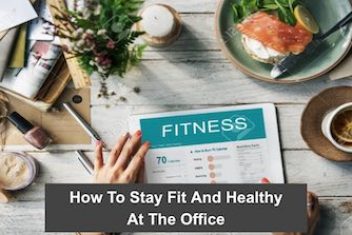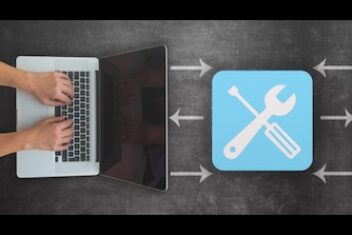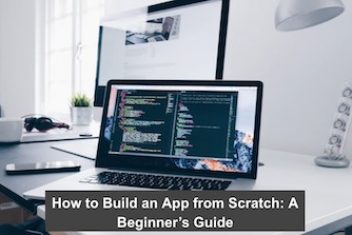By Samantha Avery – Ever since Search Engine Optimization (SEO) became prevalent in content marketing, marketers around the globe struggled to balance an original voice with SEO. How do you write unique, creative content which will appeal toreaders but also rank well with search engines like Bing, Google, and Yahoo?
Data by TechJury has shown that 82% of marketers who dabble into SEO do experience better conversion rates and overall traffic. With 93% of online experiences beginning with search engine queries, relying on SEO is inevitable if you want your content to perform well.
But, if you write content solely for SEO, your actual visitors may be put off by keyword stuffing and robotic content formatting and writing style. So, how exactly do you go about writing content for humans and search engines alike?
Read: How To Choose SEO Tools and Services For Your Business
Research Popular Keywords to Use as a Baseline
When writing content for humans and search engines, it’s smart to start with the latter and research your niche in detail. Targeting the right keywords with your content will help you establish your website on the web and lend it some authority with visitors and search engines alike. Here are a few tools you can use to find the best keywords:
- Google Keyword Planner
- SEM Rush
- Majestic
- KWFinder
- Ahrefs Keyword Explorer
Whether you’re in eCommerce, SaaS, or some other field, these tools will help you find genuine keyword trends quickly. With those keywords in mind, you can start creating topics that can then be developed into full articles, papers, or case studies. You can also get help writing a research paper, an essay, or any other type of content from a reliable writing platform like TrustMyPaper. This is especially helpful if you’re a student blogger or someone with very little free time to write their content on a daily.
Read: Alternatives to Google: These are the new search engines
Create Pillar Pages to Make Your Blog Stand Out
The one thing which differentiates spam content from worthwhile blog posts is the planning you put into it before writing. Pillar content represents long-form content which you can then develop further over time. For example, writing a general tutorial or trends overview about your industry can then let you develop other blog posts as supplementary materials.
Interlinking this content through hyperlinks will add more value for readers and encourage them to stick around on your website. Pillar pages are favored by search engine algorithms because they are very rich and useful to people who search for keywords related to them. While it will take longer to create, a single pillar page can potentially lead to multiple other useful sub-articles and even new pillar page ideas in the future.
Read: 7 Requirements to make your blog successful
Rely on Calls to Action in your Content but Don’t Go Overboard
Calls to action are a great way for you to engage your visitors and lead them to other pages and products on your site. However, too many CTAs can make your content appear overly sales-oriented and lacking in actual value.
Use calls to action sparingly and make them as original as possible while avoiding the usual sales tropes of using all-caps lettering or special characters in CTAs. Even if your content is fully legitimate and your intentions honest, anyone who sees poorly written calls to action will have second thoughts about your website. Writing CTAs more carefully will make your content more appealing to visitors and help your SEO in equal parts.
Always Double-Check your Writing, Formatting, and Hyperlinks
As your writing progresses, you will have to turn your attention to SEO more and more. Specifically, how well-formatted is your article? Every blog post you write and subsequently publish via WordPress or a similar CMS has to feature proper headings. H1 headings are reserved for article titles, while H2 and H3 are used for subheadings and sub-sub headings or lists within the article. Adding headings to your articles will make them not only more legible for humans but also easier to scan for web-crawlers searching for quality content.
Use Rich Media for an Easy Boost to your Content’s SEO
Rich media is the type of content bloggers use to enhance the value of their writing before it’s published. These content types usually consist of images, audio, video, and other similar content not related to the actual text. Why should you rely on rich media? For one, adding visual imagery to your blog posts will make them more dynamic, appealing, and “richer” in value for everyday site visitors.
Also, SEO algorithms and web crawlers look toward blog posts with rich media favorably, especially if it includes alt-tags. You can add short descriptions (which include your keywords) to the images, videos, or audio you attach as supplementary to your blog posts to improve your SEO further. Rich media featuring alt-tags is seen as more accessible and inclusive by Google and similar search engines, making it a worthwhile inclusion to your content.
The Best of Both Worlds (Conclusion)
What many marketers still fail to grasp to this day is that original content and SEO can and should go hand-in-hand. You don’t have to exclusively write opinion pieces and essays and you don’t have to write keyword-stuffed content for the sake of SEO. Taking a bit of both and mixing it into new content which still abides by SEO algorithm standards and fills a certain niche is certainly possible.
Explore how you can contribute to your industry with blog posts and long-form articles by looking at what’s missing. Fill your audience’s needs, aim for healthy keyword density in your writing, and don’t worry about hitting a solid SEO middle ground moving forward.
Samantha Avery, content writer, and the digital marketer said the following on the topic: “In addition to good headings formatting, I believe that link-building is equally important for good ranking and value for readers. Getting some help from essay writer service while formatting, proofreading, and optimizing articles with hyperlinks is a great way to make things easier for yourself. Combined, these elements will tick the right boxes both for SEO algorithms and readers.”
If you like the content, we would appreciate your support by buying us a coffee. Thank you so much for your visit and support.



